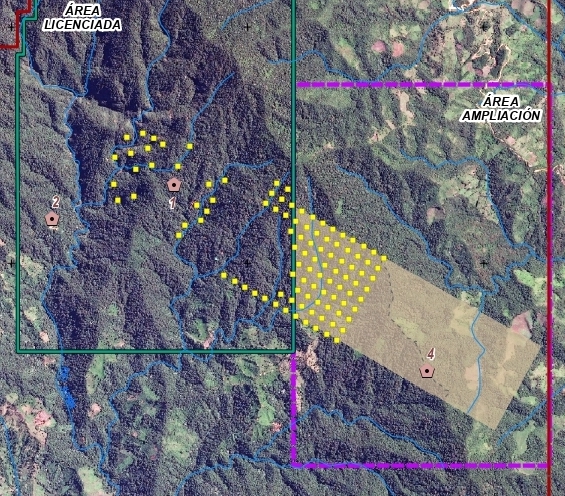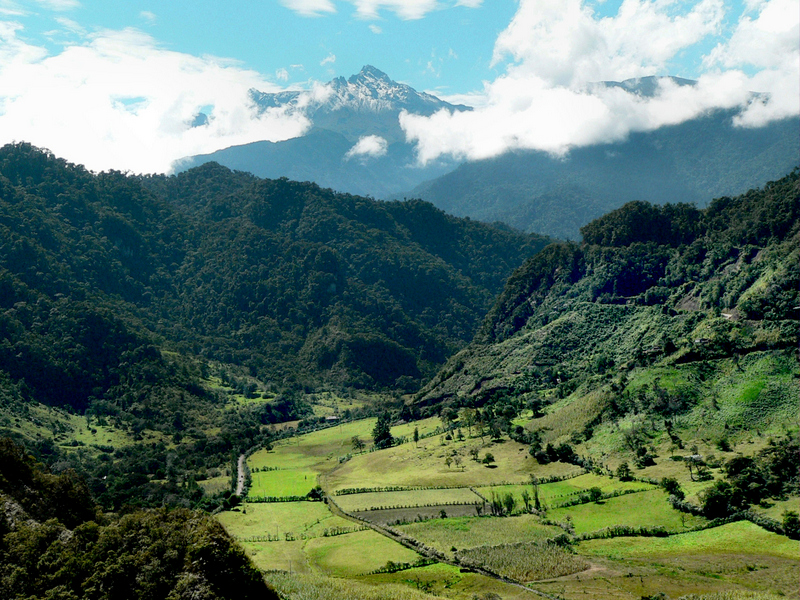The government and companies are abusing the crisis to advance their lethal agendas.
Carlos Zorrilla

It’s been a while since I’ve wanted to write this. And, it’s not like I hadn’t found the time. For the first few weeks after the outbreak, practically everything came to a halt in Ecuador; including many mining operations. As in the rest of the world, the effects of the virus have been devastating in most of the country. It’s still hard to comprehend why Ecuador was so hard-hit and so many people died, especially on the coastal provinces, and just as difficult to only pin the blame on the extraordinary amount of returning inmigrants from Italy and Spain at the critical time. Though true that Ecuador had the one of highest number of migrants in these two countries at the time of the outbreak, other Latin American- and African- countries had similarly high populations there. Put it down as governmental incompetence, fear of the unknown, the overwhelming of the health-care system, and/or the unwillingness of people wanting to leave their loved ones to die alone with strangers at health-care facilities. Be it as it may, and even though infection rates are lessening considerably, it will be a while yet before things go back to “normal. Never mind that “normal”, including the way we look at and abuse nature, is the principal cause of the nightmare. I say, may normalcy die once and for all, and a new way of relating to the natural world arise out of the ashes!
Intag barely affected.
As in many parts of the world, there was a great amount of misinformation and fear surrounding the virus and its spread. Intag was thus not alone in putting up roadblocks to limit the number of people going into and out of the region. One had- and still has- to have a very good excuse to come into Intag, or to leave the area. The legality of the roadblocks could be challenged, but they worked: so far, only a handful of cases have been reported here, and no deaths. It also helps that Intag is isolated from populated centers and relatively thinly populated, so congregation of people is uncommon (except on market days, and that came to an end with the lockdown). No doubt, the severe lockdown put in place nationally also helped to limit the number of people travelling in and out of our area.
The Mining Companies and Government Utilization of the Virus
Is it any wonder then, that a pro-extractive government and mining companies would try to utilize the Coronavirus disruption to advance their agendas? One way they are doing it is by actively and aggressively selling mining as the only salvation for the country’s economic quagmire. Especially since the price of petroleum, its main export, plummeted. Perhaps needless to say, both the companies and government are glossing over some basic facts to sell their pseudo solution. Starting with the fact that mining economies, in countries like Ecuador, end up with higher rates of poverty, increased corruption, social unrest and human rights violations, plus strengthening authoritarian governments. It’s part of the package of what is known as the Curse of Natural Resources. One may justify a country’s dependence on mining in nations without any other real economic alternatives, but in countries as culturally and biologically as diverse as Ecuador, it’s unforgivable.
The government has taken advantage of the epidemic, for example, by declaring mining a strategic activity, thus exempt from the most severe aspects of the lockdown. Organizations, including ours (Decoin), and community members, meanwhile, are having to abide by “shelter at home” orders. A 2pm to 5am curfew is still in effect for most inhabitants. Business and offices, with some exceptions, such as grocery stores and pharmacies, had to shut down. This included all tourism enterprises and restaurants including all of those in Intag. However, some mining companies were allowed to continue their activities, including gold and copper extraction in the south of Ecuador. Recently, though, the government issued a set of guidelines for the whole sector to resume full operation. The guidelines are mostly aimed at limiting spread of the virus, but also includes steps to protect mining activities with the help of the police and the army. The guidelines, incredibly, also orders mining companies to “cooperate with local health authorities” and take active measures to combat the virus; including donating sanitation equipment to local governments and communities. In other words, the national government is ceding its health and sanitation duties and responsibilities to private corporations whose work entail poisoning water sources with heavy metals, relocating whole communities and whole-scale decimation of forests. These changes are likely to open up many mining projects, including Intag’s. Because of the lockdown, however, it will be difficult for civil society to protest. Companies and governments know this and are not wasting any time in taking advantage of the situation, as this recent news from Canada perfectly illustrates.

Intag is rich in primary cloud forests harboring hundreds of species of animals threatened by extinction (Photo Credit: Carlos Zorrilla)
Though mining activities have not resumed in Intag, it is mostly due to the reaction of the communities who fear the spread of the virus. In fact, no exploration has taken place since November 2018. In large part because the two mining companies in charge of the Junin project not coming to an agreement on how to split the wealth lying beneath Intag’s biodiverse forests. Ecuador’s state-owned mining company, Enami, has no funds to invest, and Chile’s Codelco has the exploration data and funds, but is unwilling to risk investing without its counterpart. Codelco would love to take over the whole project, but is forbidden by law and the Constitution; which says Ecuador must be a 51% owner of any such deal. In fact, a recent investigative report revealed an illegal attempt to turn over Ecuador’s interest to Codelco.
“Just Plain Insane”
I believe there are other reasons for advance exploration not restarting; including the threat of legal action based on Constitutional violations, and the threat of reactivating large-scale protests; regardless of the lockdown. Also, the most recent Environmental Impact Study for exploration is replete with fundamental errors and omissions that, if approved, would trigger other legal actions. There is also the “small issue” of two endemic species of frogs and hundreds of endangered animals that will be impacted if mining were to resume. The endemic frogs and endangered species are just two factors that will make this one of the world’s most devastating mining projects, a conclusion fully supported by two expert geologists1 who are well informed on the facts of this particular mining project.
Chile and Ecuador must be evaluating whether it is worth completely relocating four to six communities, deforesting thousands of hectares of primary cloud forests and contaminating dozens of pristine rivers and streams for hundreds of years2. All, and more to, in the end, only end up with just 17 million tons of pure copper, which is imbedded in a 3,846-million-ton ore deposit3. One can only hope that this grim statistic will give government economists reason to reject the project. It is, as one of the aforementioned geologists holds, “just plain insane”.
The insanity will not keep some in government from supporting the deal for personal profit, and to get a quick cash injection to the economy, however. There are powerful interests in developing mining projects be they profitable or not. Unfortunately, given Ecuador’s institutional problem with corruption, a good deal of the cash that mining might generate in the short term will end up on fiscal paradises in the Caribbean. Even without considering the inacceptable human-rights, environmental and social costs, the fixes will be short-lived but, in the long run, economically devastating given the outrageously industry-friendly fiscal incentives the country was obligated to adopt in order to attract mining investments.
So, where does that leave us at the moment? Exploration has not resumed, but could at any moment. The companies, with backing from the government, are taking advantage of the Coronavirus to advance their agenda and win over more support for their noxious endeavor. We don’t even know if the deeply flawed environmental impact study has been approved. However, if advanced exploration were to resume, it will be difficult to rally opposition, given the fear the virus has generated in people and biased lockdown measures. Difficult, but not impossible. There is also a small but growing ray of hope that the courts will continue to regain their independence and rule in our favour when we take the state to court for constitutional violations. In mid-May 2020, the Constitutional Court agreed to hear the Constitutional challenge of the case of the Los Cedros Protected Forest in the Intag Area, based on the possible violations of the rights of nature within a Protective Forest (4).
I also do not believe that the fear of the virus will, in the end, be enough to overcome 25 years of resistance. Nor is this other pandemic powerful enough to blind us to the certainty that our homes, our communities, our magnificent forests and clean rivers, will be turned into just more toxic waste dumps in a ruined landscape if we let it happen.
Keep tuned
Intag, May 26, 2020
- Pablo Duque, until his retirement was the Dean of the School of Geology at Quito’s prestigious Polytechnic University; Steven Emerman, is an expert geologist and hydrologist at Malach Consulting, Utah, U.S.A.
- Most copper deposit contains sulfur compounds, which acidifies water coming into contact with waste rock. The highly acidic water leaches heavy metals from mining wastes. The process is called Acid Mine Drainage.
- To better envision the amount of wasted generated from this ore deposit; at the end of the mining operation, there will be more than 3,829 million tons of contaminated waste (3.829 billion tons); yet the mine will only have produced 17 million tons of pure copper. The reason is that this, as well as most copper deposits, contain very little pure copper (in this case, there is only 4.4 kilograms of pure copper in every ton [1000 kilograms] of mineralized subsoil). The amount of toxic waste does not include the waste rock between the surface and ore deposit, which is often hundreds of meters deep, and could produce the same amount of waste rock, or more, as generated from the main ore deposit.
- A “Protective Forest”, or Bosque Protector, is a special legally recognized conservation unit which could be privately or publicly owned, with similar protective status of sites under the National System of Protected Areas.
